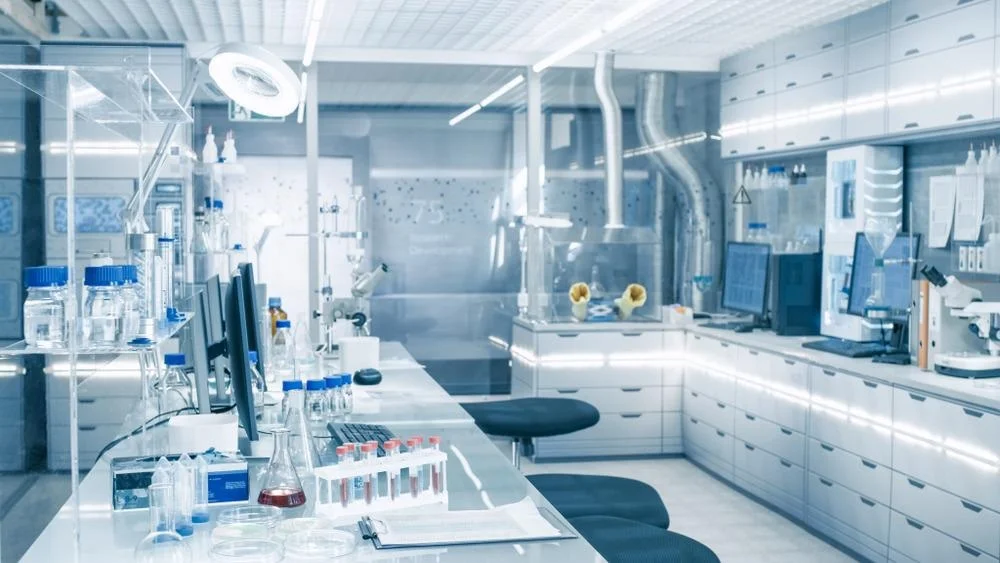Ambient Air Organic Semi Volatile Testing
The testing of ambient air for organic semi-volatile compounds is a critical component in environmental monitoring and public health protection. Organic semi-volatiles, which are present in various forms such as pesticides, solvents, and combustion products, pose significant risks to human health and the environment if not properly managed.
Our laboratory utilizes advanced instrumentation and methodologies to identify and quantify these compounds within air samples. This service is particularly important for industries involved in manufacturing, chemical processing, and waste management. By ensuring compliance with international standards such as ISO 16402-3:2018 and EPA Method 524.0, our testing provides reliable data that can inform regulatory decisions and help mitigate potential risks.
The process begins with the collection of air samples using specialized sampling devices designed to capture semi-volatile compounds effectively. These devices ensure that all relevant compounds are collected under controlled conditions to avoid degradation or contamination. The sampled air is then processed through a series of extraction techniques, typically involving solvent-based methods like QuEChERS (Quick, Easy, Cheap, Effective, Rugged, and Safe) or solid-phase microextraction (SPME).
The extracted compounds are subsequently analyzed using gas chromatography–mass spectrometry (GC-MS), which is recognized as the gold standard for this type of analysis. GC-MS allows us to achieve high sensitivity and selectivity necessary for detecting trace levels of organic semi-volatiles in air samples.
Our comprehensive report includes detailed information on detected compounds, their concentrations, and compliance with relevant standards. This data is invaluable for stakeholders involved in environmental management, health and safety assessments, and regulatory compliance.
The importance of this testing cannot be overstated. It helps to safeguard public health by identifying potential sources of exposure and informing appropriate mitigation strategies. Additionally, it supports sustainable practices by providing insights into the environmental impact of industrial activities.
Benefits
Conducting ambient air organic semi-volatile testing offers numerous advantages for various stakeholders:
- Health and Safety: Ensures that exposure levels are within safe limits, protecting public health.
- Environmental Protection: Identifies sources of pollution to facilitate remediation efforts.
- Regulatory Compliance: Provides data necessary for meeting environmental regulations and standards.
- Risk Management: Assists in identifying risks associated with air pollutants and implementing control measures.
- Sustainable Development: Contributes to the development of sustainable practices by providing essential information on pollutant levels.
The insights gained from this testing are crucial for making informed decisions that balance economic growth with environmental protection. By leveraging these benefits, organizations can enhance their reputation and ensure long-term sustainability.
Environmental and Sustainability Contributions
Ambient air organic semi-volatile testing plays a pivotal role in promoting sustainable practices by contributing to several key areas:
- Emission Reduction: Identifies sources of emissions, enabling targeted reduction efforts.
- Material Selection: Helps industries choose less harmful chemicals and materials for production processes.
- Pollution Control: Provides data to develop effective pollution control strategies and technologies.
- Economic Efficiency: By identifying inefficiencies in chemical usage, businesses can reduce costs while improving environmental performance.
The results of our testing are used by various entities including governments, regulatory bodies, and private companies. This collaborative approach ensures that the best practices in air quality management are adopted worldwide. Our commitment to sustainability is reflected not only in our testing methods but also in our continuous efforts to innovate and improve.
Use Cases and Application Examples
| Industry Sector | Application Example | Purpose of Testing |
|---|---|---|
| Manufacturing | Evaluating emissions from chemical plants to ensure compliance with regulations. | To assess the effectiveness of pollution control measures and reduce risks associated with exposure to semi-volatiles. |
| Agriculture | Detecting pesticide residues in ambient air near agricultural areas. | To identify potential health hazards and evaluate the environmental impact of pesticide use. |
| Transportation | Monitoring emissions from vehicles to assess compliance with emission standards. | To mitigate the adverse effects of transportation-related pollutants on public health and the environment. |
| Energy | Evaluating air quality in areas near power plants for organic semi-volatile compounds. | To ensure that emissions are within acceptable limits, promoting cleaner energy solutions. |
| Construction | Detecting volatile organic compounds (VOCs) during renovation and demolition activities. | To minimize the health risks associated with indoor air quality in construction sites. |
| Healthcare Facilities | Monitoring for contamination of semi-volatile compounds near medical waste disposal facilities. | To protect healthcare workers and nearby communities from potential exposure to harmful chemicals. |
The data generated by our testing is essential for these applications, providing actionable insights that can lead to improvements in environmental protection and public health. Our expertise ensures that the results are accurate and reliable, supporting robust decision-making processes.





